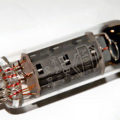
It looks like it could be over-and-out for the two-way radio catchcry “over.” Stanford researchers say an obvious – but until now overlooked – engineering enhancement allows wireless signals to be sent and received simultaneously on a single channel, a breakthrough that will at least double the speed of existing wireless networks.
“Textbooks say you can’t do it,” said Philip Levis, assistant professor of computer science at Stanford. “The new system completely reworks our assumptions about how wireless networks can be designed.”
Cell phone networks already allow users to talk and listen simultaneously, but the engineering technique used is expensive and cumbersome. In most other wireless networks, including WiFi, each device has to take turns speaking or listening. “It’s like two people shouting messages to each other at the same time,” said Levis. “If both people are shouting at the same time, neither of them will hear the other.”
The Stanford team began working on a new approach when they came up with a seemingly simple idea. What if radios could do the same thing our brains do when we listen and talk simultaneously: screen out the sound of our own voice?
“When a radio is transmitting, its own transmission is millions, billions of times stronger than anything else it might hear [from another radio],” Levis explained. “It’s trying to hear a whisper while you yourself are shouting.”
The Stanford breakthrough takes advantage of the fact that each radio knows exactly what it’s transmitting, and hence what its receiver should filter out. The process is analogous to noise-canceling headphones.
But other researchers weren’t convinced, telling the team that their idea was “so simple and effective, it won’t work,” because something that obvious must have already been tried unsuccessfully.
But work it did, with major implications for future communications networks. The most obvious effect of sending and receiving signals simultaneously is that it instantly doubles the amount of information that can be sent. That means much-improved home and office networks that are faster and less congested.
The group has a provisional patent on the technology and is working to commercialize it. They are currently trying to increase both the strength of the transmissions and the distances over which they work, a necessity before the technology is practical for use in Wi-Fi networks.
Related:
Visible light data network under development
GPS open to attack, say researchers
Biologically inspired, ultra-broadband chip could enable “cognitive” radio


















Comments are closed.